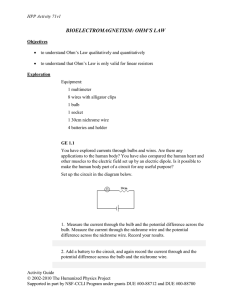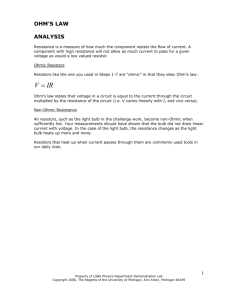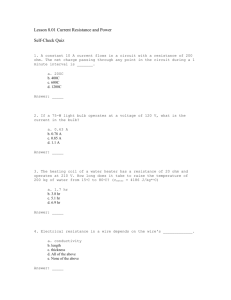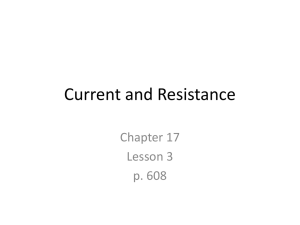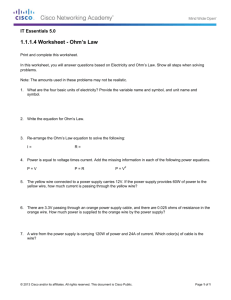to understand Ohm’s Law qualitatively and quantitatively UNIT 11
advertisement
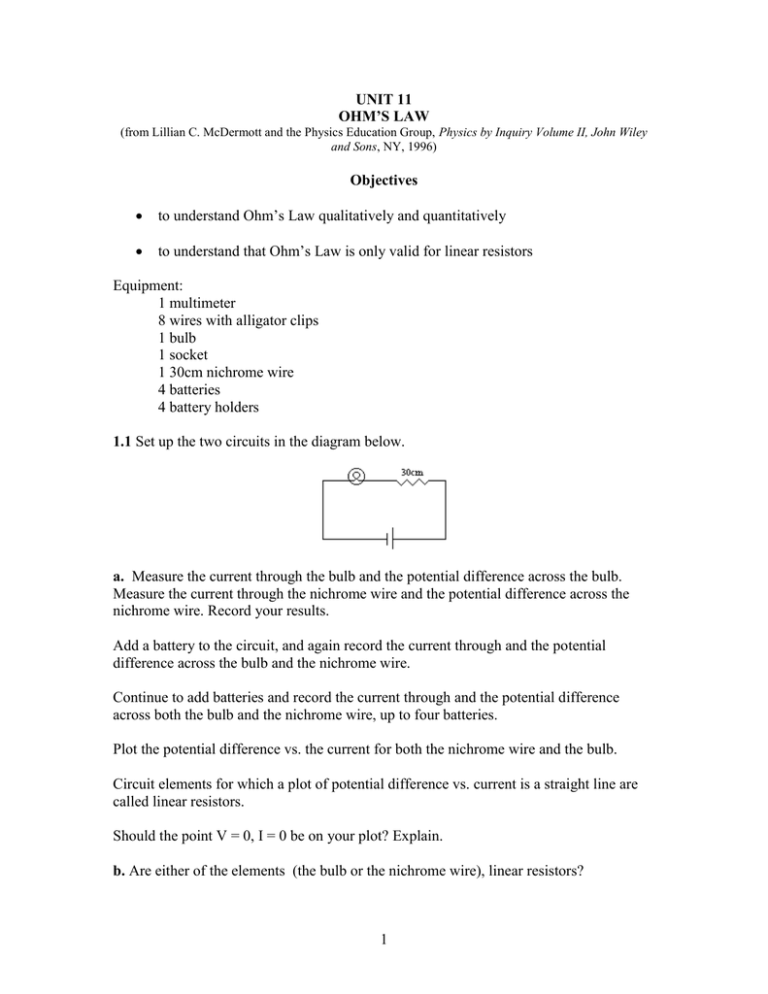
UNIT 11 OHM’S LAW (from Lillian C. McDermott and the Physics Education Group, Physics by Inquiry Volume II, John Wiley and Sons, NY, 1996) Objectives to understand Ohm’s Law qualitatively and quantitatively to understand that Ohm’s Law is only valid for linear resistors Equipment: 1 multimeter 8 wires with alligator clips 1 bulb 1 socket 1 30cm nichrome wire 4 batteries 4 battery holders 1.1 Set up the two circuits in the diagram below. a. Measure the current through the bulb and the potential difference across the bulb. Measure the current through the nichrome wire and the potential difference across the nichrome wire. Record your results. Add a battery to the circuit, and again record the current through and the potential difference across the bulb and the nichrome wire. Continue to add batteries and record the current through and the potential difference across both the bulb and the nichrome wire, up to four batteries. Plot the potential difference vs. the current for both the nichrome wire and the bulb. Circuit elements for which a plot of potential difference vs. current is a straight line are called linear resistors. Should the point V = 0, I = 0 be on your plot? Explain. b. Are either of the elements (the bulb or the nichrome wire), linear resistors? 1 c. Write an equation for the potential difference vs. the current for the nichrome wire. For linear resistors, the potential difference and the current are related by a constant V IR The constant is the resistance measured in ohms. The symbol for ohms is . Equipment: 1 multimeter 2.1 Take a multimeter and set it to measure resistance. a. Measure your resistance by holding one lead in each hand. Compare your resistance to the resistance of your partners. b. Set the multimeter to measure potential difference. Hold one lead in each hand and measure the potential difference between those two points. How does this compare to the measurements you made in part 5.3 b when you measured your EKG? Explain. Obtain the handout on the effect of different amounts of current on the human body. SUMMARY You should understand Ohm’s Law qualitatively and quantitatively and understand that Ohm’s Law is only valid for linear resistors. You should be able to work problems using Ohm’s Law, Kirchhoff’s First Rule and Kirchhoff’s Second Rule.. 2
